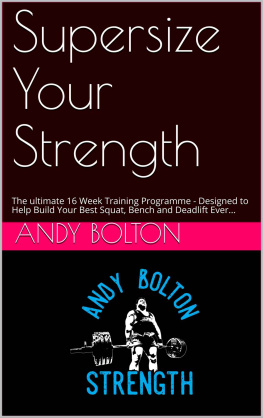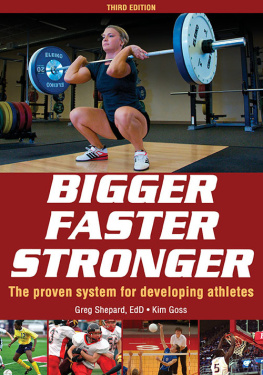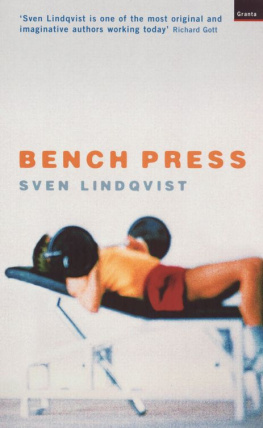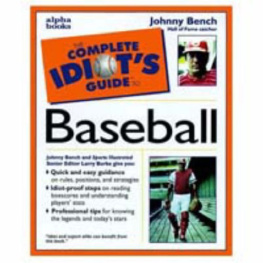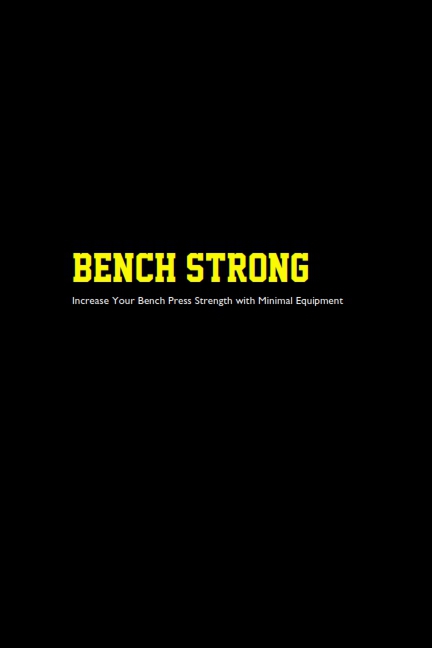Dynamo Strength Bench Strong
Writer: Shobit Jain
Cover Image: Andrew Blight
Copyright Dynamo Strength, Shobit Jain, 2020
No part of this book may be reproduced in any form or by any means without prior written consent of the author.
Disclaimer
The author is not responsible in any manner whatsoever for any injury that may occur through following the instructions contained in this material. The activities may be too strenuous or dangerous for some people. The readers should always consult a physician before engaging in them.
DEDICATION
I would like to dedicate this book first and foremost to my mentor Louie Simmons, the founder and owner of the legendary Westside Barbell Club in Columbus, Ohio without whom this book would have never been possible to write. He taught me how to train correctly. It is mostly because of him that I know a few things about strength training. My training partners especially at Westside Barbell. They pushed me beyond limits and taught me things I would have never learned otherwise. My parents, wife, and friends for supporting in my powerlifting journey and life in general, my professors at University of Cincinnati and Pittsburg State University, and all my readers. Thank you to all who will read this book.
Table of Contents
Chapter 1
INTRODUCTION
The bench press is one of the power lifts most people struggle with. Most of them progress fairly quickly with the squat and deadlift but find tough when it comes to bench press. There are so many programs in the market to make your bench press grow. Also, there are too many tools and implements one can use in the training to build the bench press: implements that change movement pattern as well as loading or even changing the movement altogether. No doubt, adding in a variety of tools and implements such as different types of bars, bands, chains, dumbbells, kettlebells, machines can introduce a lot of variety to your training but it can also hurt your training since they can create a lot of confusion about what to use and when to use it.
I have seen so many people totally ignoring the basics and directly jumping into using the advanced training implements. Notice I said advanced. They get all kinds of tools in their gym and do not know when to introduce them to training. In my opinion, you have to earn your right to use these implements and you do that by building a proper foundation first. A lot of people are in the impression that to build your bench press you need to have all kinds of advanced tools in the gym which is not true. You can build your bench press significantly with minimal equipment. All you need is a power rack, a good quality power bar, plates, safety straps, bands, a nice sturdy bench and of course solid training partner(s). Yes, the bands. I believe bands are a must in any gym as they alter the force-velocity curve. Many dont have fancy tools and implements in their gym and yet are working hard to grow their bench press with great difficulty which is why I have written this book.
During my initial years of training, the bench press was the fastest lift to go up and many people thought I will be a great bench presser. Believe it or not, in the first two years of training, my bench press rose from 65lbs to 230lbs. But then I hit a plateau and didnt make smart enough changes in the program to see the lift go up again. It was at 230lbs for the next four years. My bench started to go up again when I learned what smart programming is and how and when to make certain changes in the program. It increased to 405lbs and then I had a grade 2 pec-tendon rupture which is a story for another day and my bench again came down to 275lbs. I again stopped getting smart and thus my bench stopped increasing again. Now my bench has again started to go up steadily because of a program I have carefully designed for myself. This program has allowed me to put 35lbs in my bench press in 6 months.
Before proceeding further let me first give the credit where its due. I have learned almost everything about training programs from the legendary powerlifter, coach and my mentor Louie Simmons, the owner of the world-famous Westside-Barbell Club in Columbus, Ohio. I thought I knew everything about training until I got under his wings and learned how much I dont know. This book will not only help you build your raw bench press but also help you learn the fundamentals for designing an effective bench press program for you and your athletes. I am sure you will see great strength gains after applying this book to your training.
Note that everything mentioned in this book is for raising your raw bench press strength. While many have criticized the methods outlined in this book as being designed for equipped lifting, I can assure you that these have worked for me tremendously as well as others who train or trained at the Westside Barbell and many other raw lifters who follow these methods intelligently.
Chapter 2
METHODS OF STRENGTH TRAINING
There are many ways to facilitate strength and hypertrophy gains but the three main ones, the majority of strength training programs depend on are the Maximal Effort Method, the Dynamic Effort Method, and the Repeated Effort Method.
Conjugate Method
The conjugate method was introduced by the Soviets in 1972. It is used by Westside Barbell. They use a mix of Russian and Bulgarian system and continuously develop it. This method has been used by their athletes for many years resulting in more than 140 world records.
The max effort lifts are changed every week while dynamic effort lifts are waved and special exercises similar to the classical lifts are used to build them. The special exercises are also rotated as and when necessary to prevent adaptation.
This method addresses different elements of strength
Absolute strength
Strength-speed
Speed-strength
Explosive strength
Quickness
Maximal Effort Method
Maximal effort means one rep max that is, lifting the maximum load. This is superior to all other methods as it builds both inter and intramuscular coordination. As per the SAID principle, the body and CNS will adapt to the loads placed upon them. That is why using maximal loads will elicit the greatest strength increments. This method recruits all the motor units. The intensity is high (90%+ to 100%+) and the volume is low. This is the best method, in my opinion, to identify weaknesses as it is under maximum loads our technique tends to fall apart or weakest muscle becomes the limiting factor in our pursuit to lift the weight.
This is followed by 3-4 supplemental and accessory exercises.
Dynamic Effort Method
The dynamic effort method is used to increase the rate of force production and explosive strength. This method will not increase maximal strength. It involves lifting a non-maximal load with the maximum speed possible. Since non-maximal loads are being used, it enables the athlete to practice the correct technique and develop motor patterns. This method also helps in building tremendous reversal strength. After the dynamic effort lifts, supplemental and accessory exercises are performed to eliminate weaknesses. The intensity is low to moderate and the volume is high on the dynamic effort days.
Repeated Effort Method
The repeated effort method involves lifting a submaximal load to failure. This method recruits all the motor units as per the size principle. The result is muscular hypertrophy. However, taking a set to failure is rough on the body and lengthens the recovery time as well as affects the work capacity. It can also lead to injuries as the technique tends to break down in the last few reps due to fatigue. Also, since each set is taken to failure, the work volume is limited. Due to this reason, I recommend you to stop the sets as soon as the technique breaks down which means stopping 1 or 2 repetitions short of failure. After finishing the max effort or dynamic effort lifts, we perform supplemental and accessory exercises using the repeated effort method.





